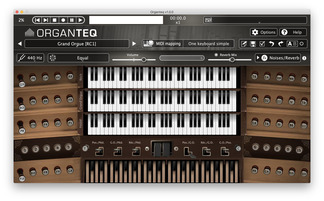

Many microphone models, with various directivity patterns, are available.Directional microphones support, which can be rotated in all directions.
#Dowlad pianoteq 5 free

bugfix for Velocity curve to allow silent notes.Metronome bugfixes (1/1 time signature begin silent, accent on first not being recalled).Bugfix for AU plugin not being recognized by a few hosts (STAGE version only).Small updates to D4, K2 (lowered a few longitudinal modes) and Bluethner (voicing).Extended keyboard range switch available in the interface.Enhanced Binaural model for all instruments.Advanced parameters for tuning, voicing and soundboard adjustment.Sounds and behaves just like a real piano.Responds in real time to pianist's interpretation.System friendly: Pianoteq adapts dynamically its CPU consumption to the resources available on your computer.New possibilities: The unique adjustable parameters result in great realism and even allow going beyond the material constraints of an acoustic piano, thus being able to create new instruments and sounds.Simulating acoustic pianos: Everything that characterizes an acoustic piano is there: the mechanic noises (optional), the complexity of pedals and strings in interaction, the percussion impact on staccato play, and the beauty of the piano sound.It was followed in the 20 century by the second generation electro-acoustic pianos and the third generation sampled pianos where each note is a recording of how it sounded during a specific moment in time, not taking into account the complexity of the instrument.Īccording to Modartt, Pianoteq is the first and only piano belonging to the fourth generation, developed in order to go beyond the limitations of the third generation and to become a versatile and innovating tool. The first generation of pianos began with Cristofori's pianoforte in 1698 which came to maturity at the end of the 19 century with the acoustic grand pianos. It is responding to how the pianist is striking each key and how strings are interacting, just like a real piano does, resulting in an expressive and vivid instrument. It is in fact the first virtual piano factory - it can produce new brands as well as copies of historical instruments.Being a truly modelled piano, the sound is created in real time from scratch through a sophisticated mathematical model, simulating an acoustic piano. Pianoteq will provide users with the first and only piano belonging to the fourth generation, developed in order to go beyond the limitations of the third generation and to become a versatile and innovating tool. It was followed in the 20th century by the second generation electro-acoustic pianos and the third generation sampled pianos where each note is a recording of how it sounded during a specific moment in time, not taking into account the complexity of the instrument. The first generation of pianos began with Cristofori's pianoforte in 1698 which came to maturity at the end of the 19th century with the acoustic grand pianos. Second generation: electro-acoustic piano (1929) This is the very first, and only, piano available that belongs to this generation. Pianoteq is issued from an academic research and results in what we call the fourth piano generation. A powerful tool that is able to produce amazing piano sounds


 0 kommentar(er)
0 kommentar(er)
